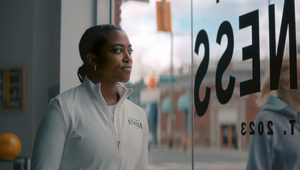
Anticipation as Intimacy: Why In-Flight Entertainment Is Set to Take Off

Image credit: Alev Takil via Unsplash
Great customer experiences are one of two things: time spent or time saved. Let’s talk about time spent.
Somewhere between 30,000 feet and the edge of imagination, the seatback screen has quietly become one of the most underappreciated, overengineered entertainment platforms on Earth—or off it.
While Silicon Valley obsesses over the future of screens — folding them, shrinking them, strapping them to our faces — in-flight entertainment systems already deliver something more ambitious: an environment-aware, hyper-contextual, multi-modal, deeply personalised content ecosystem that doesn’t kill time, it elevates it.
Here’s the truth: in-flight entertainment should be the gold standard. It’s one of the few experiences that knows where you are, where you’re going, how long you’ll be there, what language they speak, what the weather is like when you land, and what might make you feel calmer in the moment. It’s not just entertainment — it’s emotional UX. It’s time for architecture. And when done right, it’s pure creative intelligence.
So why isn’t this the benchmark?
Destination as a Story Engine
If your next stop is Tokyo, your screen should become a portal — curated content from Japan, cultural deep dives, food docs, anime, language learning tools, interactive maps, live booking links for experiences on the ground. Not a generic Netflix list with nothing but filler, but something that turns anticipation into inspiration.
IFE should be destination-native. Every journey deserves its own cinematic universe.
The Most Personal Screen in the World
Spotify Wrapped taught us the power of post-playback personalisation. Now imagine that for flights. What you watched. What you skipped. What made you laugh at 35,000 feet. A memory layer that travels with you — not just across flights, but across life. You build a travel identity. Your seat remembers.
We’ve seen this in pieces — JetBlue’s resume features and Emirates’ watchlists — but the real opportunity is in connective tissue. Pre-watch on the app, sync to your seat, resume on your phone post-flight — entertainment as a thread, not a bubble.
Second Screen, First-Class Thinking
Phones don’t need to compete with seatback screens. They can be co-pilots. Controllers. Content explorers. Add-on layers that unlock deeper metadata, previews, social watching and synced playback. Qatar’s touchless controls, Singapore’s companion app — these are glimpses. But no one’s nailed the orchestration. Yet.
Social, Playful, Alive
The cabin doesn’t have to feel like a sensory-deprived zone. What if it became a microcosm of community?
Watch parties with seatmates or family.
Real-time food ordering with product suggestions.
In-air games with global opponents.
Chats with fellow travellers based on shared interests or destinations.
Sure, someone will eventually make a Tinder-for-planes. But what’s more compelling is a Peloton for wellness at altitude. Or a Calm session that syncs with turbulence.
The Future Is Already Flying
While most content ecosystems feel bloated, fragmented and passive, IFE has the chance to be the opposite: tight, purposeful, and responsive. This isn’t about replicating Hollywood. It’s about curating your headspace during one of the few moments you’re untethered from the world — and fully present.
Airlines are sitting on the world’s most immersive entertainment platform. It knows your context. It controls the hardware. It owns the time. And it holds your attention in a way no other platform can.
Let’s stop thinking of seatback screens as dead tech. They’re prototypes for what entertainment becomes when it’s designed with intention. Intelligent. Integrated. Inspired by the journey itself.
If we get it right, every screen on Earth will start looking up.
And this is just the beginning.
The seatback screen isn’t a remnant of old UX. It’s a blueprint for composable, anticipatory experience design. A system that pulls in real-time signals — seat location, flight path, time to destination, even biometric cues — and turns them into tailored moments of content, utility, and emotion.
This is the architecture of anticipation. Interfaces that adapt. Stories that shift. Tools that understand what you need before you do. Not because they’re invasive — but because they’re attuned to your context.
That kind of design doesn’t just entertain — it creates intimacy. The screen becomes less of a portal, more of a companion. One that meets you where you are and grows with you as you move through time and space.
And when the system understands you — truly understands you — the emotional impact runs deeper than any flat-screen streaming service ever could. Because you’re not just watching a story. You’re living through one.
This is experience design at its highest altitude. And if we unlock its full potential, it won’t just redefine in-flight entertainment.
It’ll reshape how we expect to feel in every digital moment that follows.















